
Where to See the Northern Lights in Minnesota
Where to See the Northern Lights in Minnesota
By Brian Fanelli
Looking for the best place in the U.S. to see the Northern Lights? Between its prime location up north, Dark Sky Park (Voyageurs National Park) and Dark Sky Sanctuary (Boundary Waters Canoe Area Wilderness), Minnesota presents many opportunities for viewing and photographing the vibrant phenomenon throughout the year. Here is how and where you can spot bright and bold glimpses of the aurora borealis without buying a transcontinental plane ticket.
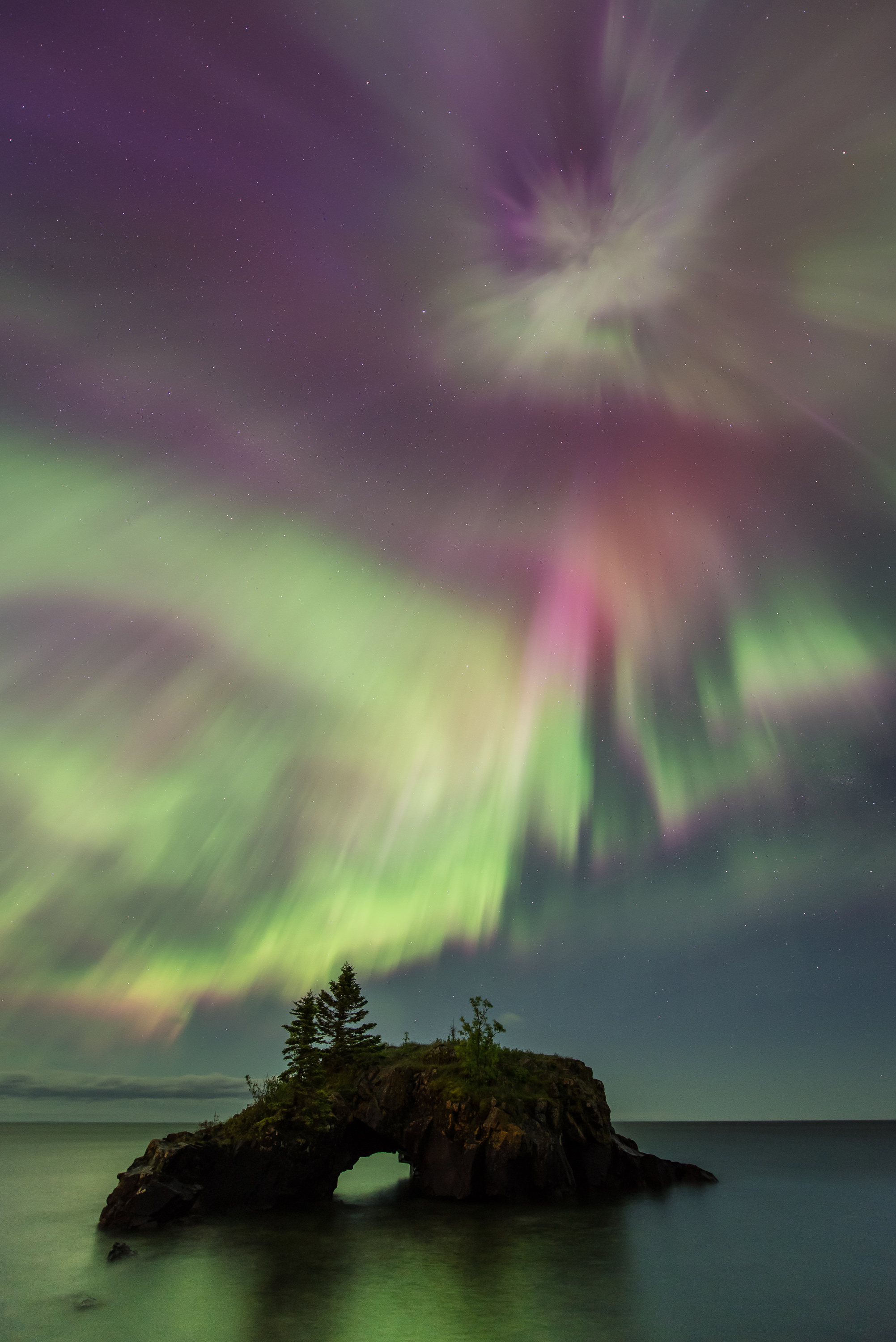
A solar storm explosion near Grand Marais / Travis Novitsky
WHAT ARE THE NORTHERN LIGHTS?
There’s a perfectly scientific explanation for the aurora borealis phenomenon, but when you see it in person — weaving, flickering and pulsing across the night sky with magical waves of green, purple and red — it feels like the universe is reaching out to you personally and saying hello.
One slightly less obvious reason why Minnesota is an incredible place to view the northern lights? Our abundance of inland lakes.
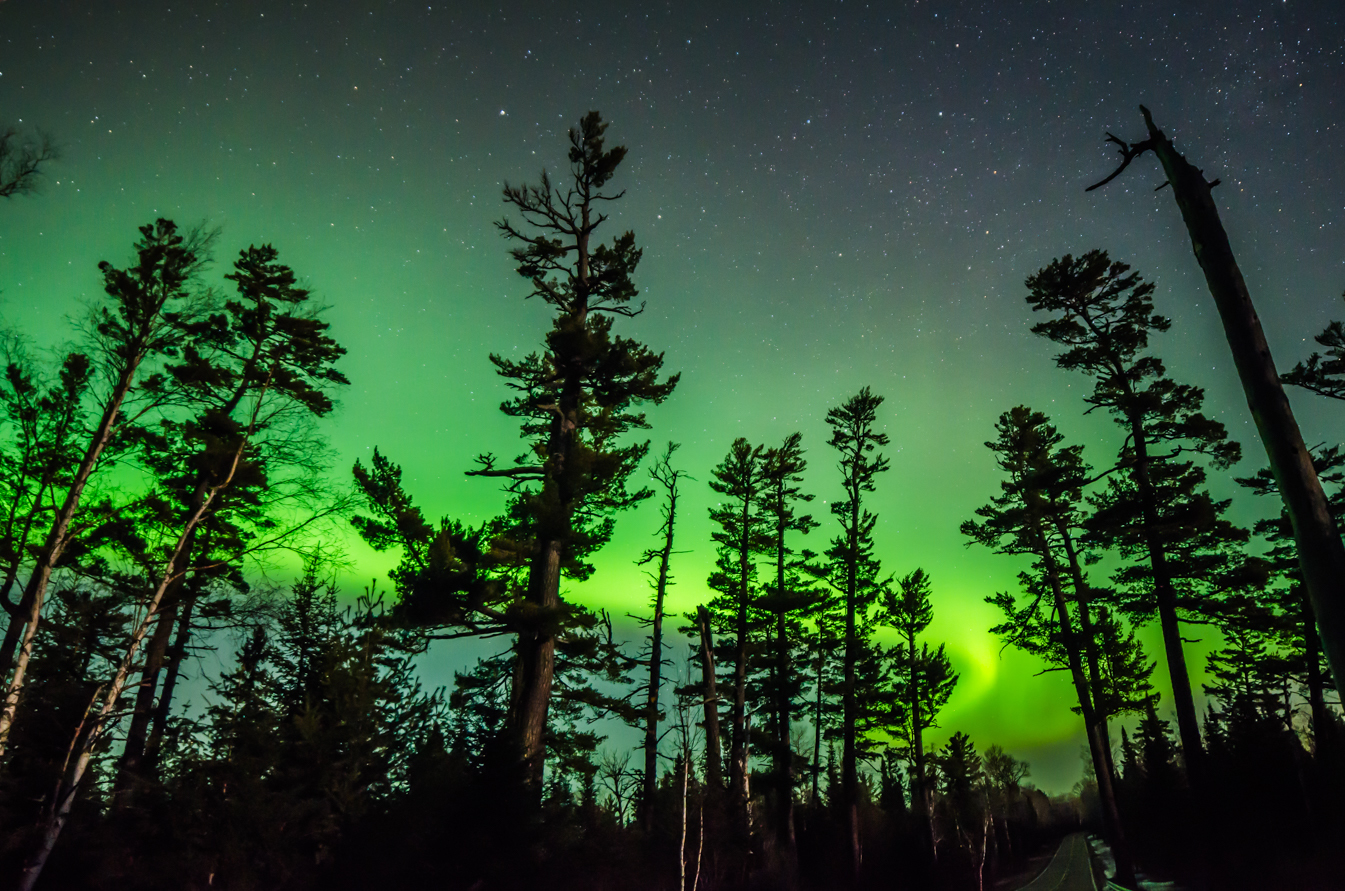
Northern lights over the Gunflint Trail / David Johnson
“My favorite spot is on the south shore of any inland lake in northeast Minnesota," says prolific northern lights photographer Travis Novitsky. "Being on the south shore means you get a great view of the lights looking north over the lake.” (As their name implies, northern lights are often most visible in the northern part of the sky.)
Unlike other states that might have one or two ideal spots to view the northern lights, Minnesota’s 10,000 lakes offer borealis chasers a practically unlimited supply of unique spots to view and frame them.
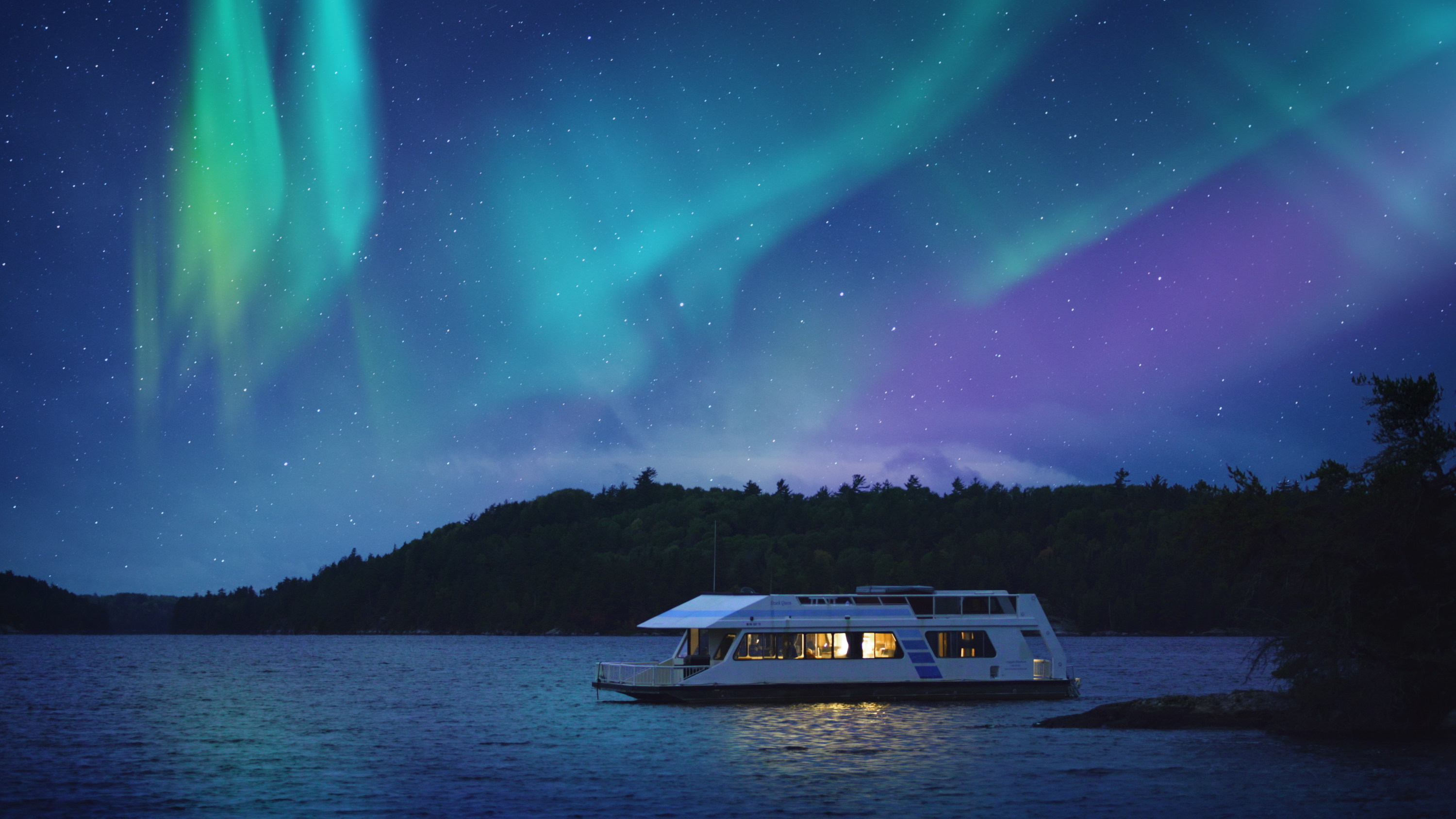
Northern lights over a houseboat in Voyageurs National Park
WHERE CAN I SEE THE NORTHERN LIGHTS IN MINNESOTA?
Undisturbed by the light pollution of Minnesota’s urban areas, natural darkness reigns as you venture into the northernmost reaches of the state. Here are a few of the best spots for catching the aurora borealis:
- The Boundary Waters is a unique, certified International Dark Sky Sanctuary that's accessible primarily by canoe. Spanning 150 miles along the U.S.-Canada border and encompassing over 1,100 lakes, expect epic night skies after days filled with paddling and portaging.
- Cook County visitors can frequently see the sky shining over Lake Superior and along the Gunflint Trail.
- Voyageurs National Park is a newly certified International Dark Sky Park offering expansive views of unpolluted skies from its waterways, where visitors can see impressive meteor showers and northern lights shows. More than a third of this remote 218,000 acre national park is covered in water and presents primetime night sky viewing.
- Lake of the Woods, where there is a panoramic view of the waters and forests by day and, sometimes, the Milky Way and northern lights by night.
- Separated from the rest of Minnesota by Lake of the Woods, the Northwest Angle is the northernmost point in the continental U.S. Prime dark skies territory, in other words.
Eagle Lake Observatory / Merle Hiltner
Outside of northern Minnesota, other destinations across the state, remote and urban alike, provide ideal stargazing conditions
In the central and southern parts of the state — including Park Rapids, St. Cloud, Stillwater, Lake City, Mankato and Rochester — locals can see constellations on any clear night, and these cities have been known to host an occasional northern lights display.
Just miles from downtown Minneapolis, Silverwood Park hosts after-dark events for visitors to explore and learn about the fascinating things that occur outside after the sun sets.
Check out more places to stargaze near the Twin Cities, from Afton State Park to Eagle Lake Observatory.
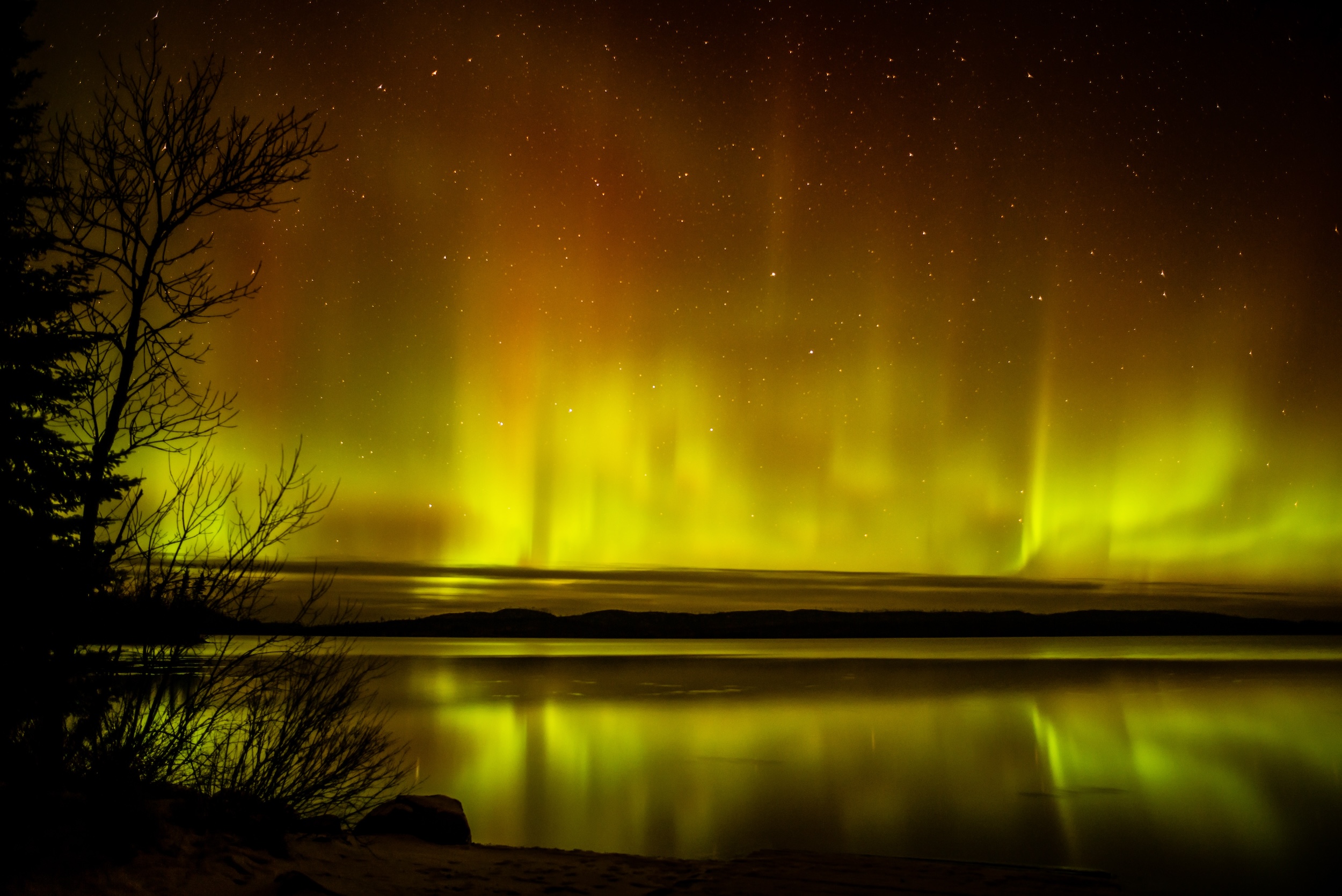
Northern Lights near the Gunflint Trail / Credit: Jackie Sherer
WHEN IS THE BEST TIME OF YEAR FOR THE NORTHERN LIGHTS?
The early sunsets and long, star-filled nights of fall and winter make those seasons popular for northern lights trips, but despite what you may have heard, no one season is especially likely to result in a showing.
That doesn’t mean weather has no effect on light activity. In fact, northern lights can be predicted quite accurately by following weather conditions — just not the weather conditions here on Earth. What you want to follow is space weather, primarily the solar wind stream and solar flares of the sun.
Novitsky uses spaceweather.com as his primary resource for tracking northern lights activity. “If there’s a chance of activity, [the site] will tell you about it — sometimes as many as three or four days in advance. I check that website almost every day.”
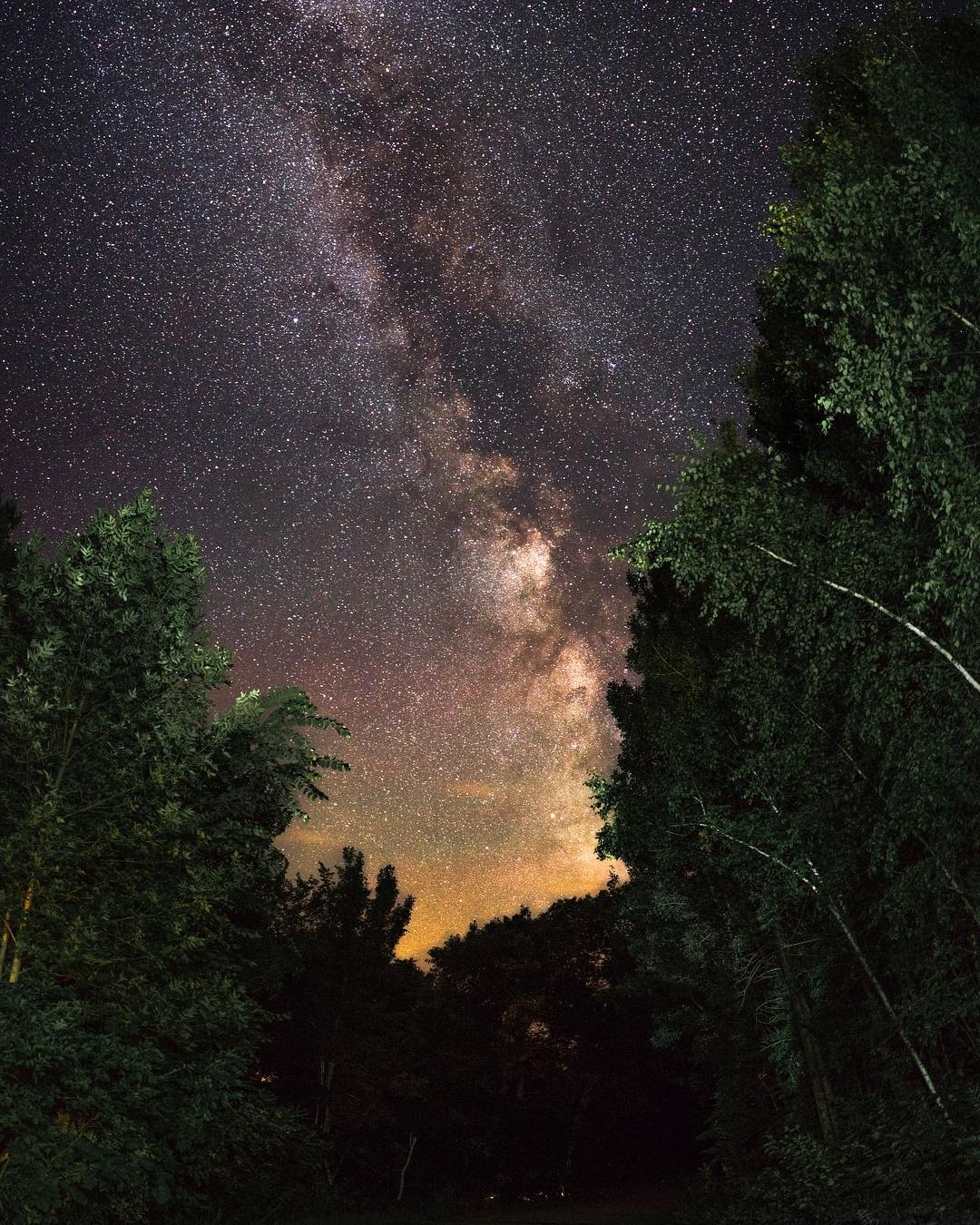
Milky Way stargazing near Motley / Jordan Watke
HOW CAN I CAPTURE THE NORTHERN LIGHTS?
Capturing an incredible photo of the northern lights is possible with most types of modern cameras. Just make sure your camera allows for manual shutter speed control, because capturing a truly stunning shot requires an exposure of 10 to 30 seconds. Other than manual shutter speed, you’ll also need a sturdy tripod to keep your camera steady during those long, night sky exposures.
Or you could simply use your smartphone.
According to longtime dark skies photographer Bob King, "If you use the night photography mode on a newer phone, you can take lovely pictures of the northern lights.... The one key is to have some way to mount the phone so it's still during the exposure. It might be as simple as just rigging something up with Velcro. As long as you can see and compose the picture, then you're good."
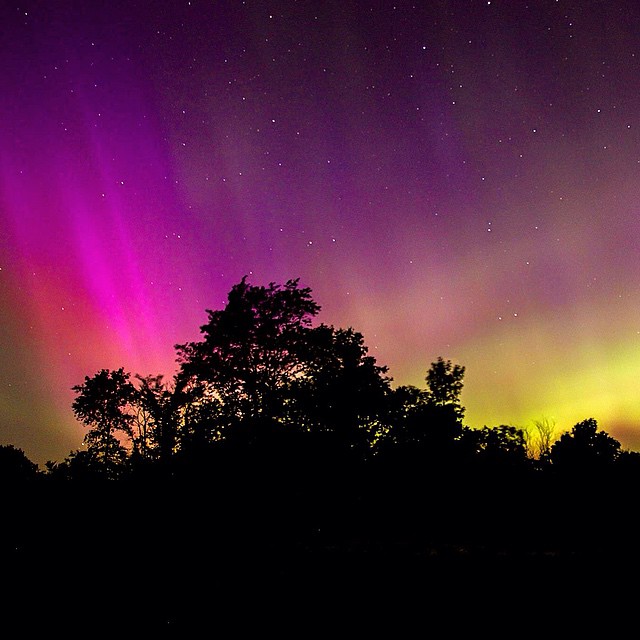
Northern lights in Minneopa State Park / @russ.man
Of course, you won't catch the northern lights every time you go out shooting. It really depends on whether the skies are clear and the celestial forecast is leaning in your favor. Either way, you'll find plenty of other, more common night sky photo ops in the North Star State. Rural Minnesota's deep, dark skies are rich with celestial displays such as meteor showers, shooting stars, and the Milky Way.
The best thing to do is to manage your expectations and maintain some perspective. After all, the northern lights aren't controlled by a switch any more than the wild animals at a safari are. But, for many northern lights photographers, that's part of the fun. Because when the solar wind blows just right, and the sky is clear, you’ll come face-to-face with a phenomenon that humans have been yearning to capture and understand ever since we first looked toward the stars. There's nothing quite like it, and no matter how much time you spend chasing the northern lights, it's always worth it.
Check out 10 Stellar Tips for Stargazing Under Minnesota's Dark Skies.


